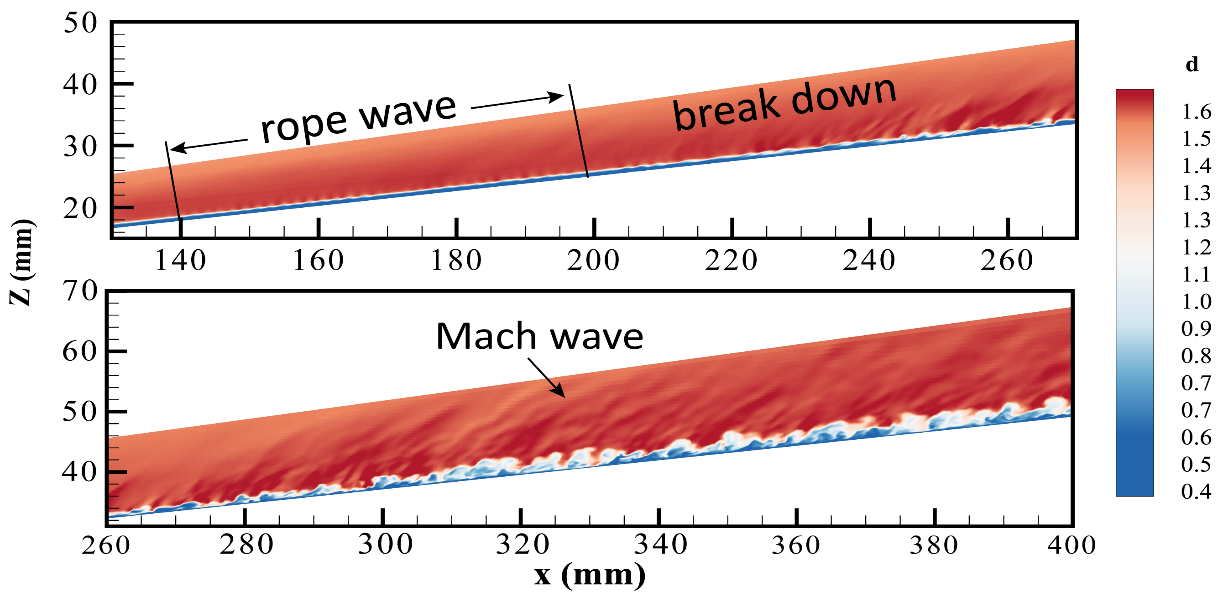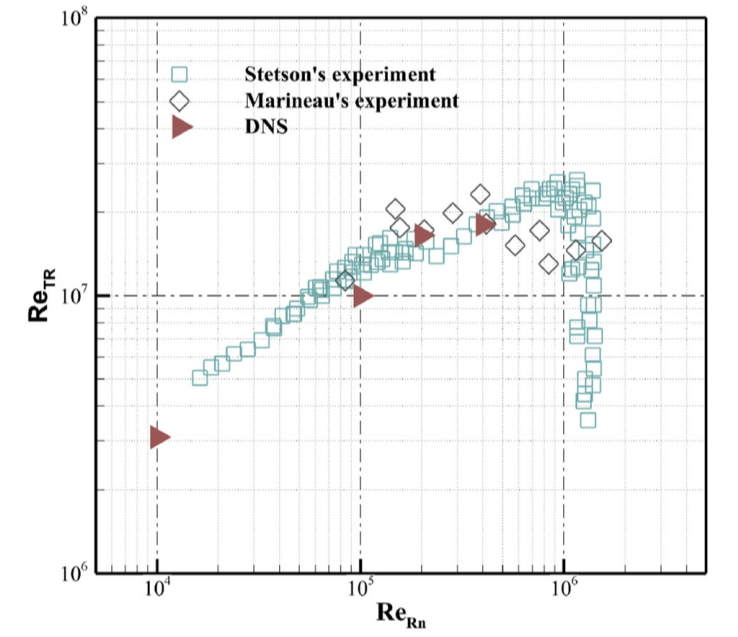Recently, the team of researcher Li Xinliang from the State Key Laboratory of High-Temperature Gas Dynamics at the Institute of Mechanics, Chinese Academy of Sciences, conducted a large-scale direct numerical simulation study on blunted cones with different nose bluntness using GPU acceleration technology. This research helps understand the process of natural transition in compressible boundary layers at hypersonic speeds.
The team used the GPU-accelerated fluid dynamics open-source software OpenCFD-SCU, developed in-house, to simulate the boundary layer transition from laminar to turbulent on a blunt cone with a 0°angle of attack and a 7°semi-cone angle at Mach 6. The radii of the cone tips were 1mm, 10mm, 20mm, and 40mm. Thanks to the powerful computational capability of GPUs, the grid size for direct numerical simulations of blunted cones has reached an unprecedented 31.3 billion, yielding high-precision, high-resolution detailed flow fields, providing reliable data for further theoretical modeling and mechanism research.
The direct numerical simulation results show that, under the selected cone tip radii, the transition location gradually moves downstream as the radius increases, without the occurrence of "transition reversal." Additionally, smaller cone tip radii lead to more intense changes in the mean velocity profile along the flow direction and more evident overshooting of skin friction. This is due to the interaction between disturbance waves from the entropy layer and those within the boundary layer, leading to an increase in the characteristic frequency of boundary layer disturbance waves, thus producing more significant velocity gradients along the flow. At the same cone tip radius, the characteristic frequency of disturbance waves within the boundary layer shows a downward trend along the flow direction, attributable to the spatial evolution of vortex structures.
Moreover, all conditions exhibit two groups of characteristic frequencies - high and extremely low - within the boundary layer. As the entropy swallowing phenomenon in the 1mm condition occurs before boundary layer transition, disturbance waves within the boundary layer are influenced by those from the entropy layer, making the high-frequency disturbance waves in the 1mm condition significantly higher than in other conditions. This phenomenon has also been observed in wind tunnel experiments.
The research results were published in Physics of Fluids with authors Zhu Yanhua, Li Xinliang, Guo Tongbiao, Liu Hongwei (corresponding), and others. The research was supported by the National Key R&D Program, the National Natural Science Foundation, and others.
link to the paper:Direct numerical simulation of slender cones with variable nose bluntness based on graphics processing unit computation | Physics of Fluids | AIP Publishing

Figure 1. The instantaneous density normalized to the freestream density and its variation along the flow direction

Figure 2. The evolution of vortex structures along the flow direction in the flow transition zone visualized using the Q-criterion

Figure 3. Time-averaged and circumferential distribution of wall friction coefficients

Figure 4. Variation of transition Reynolds number with the Reynolds number of head bluntness